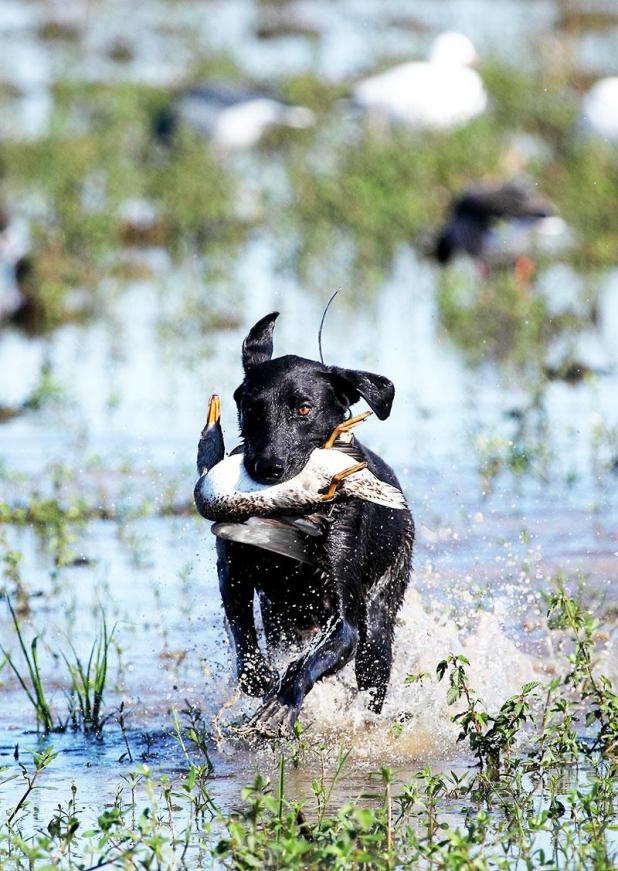
(Submitted Photo/Courtesy of John K. Flores)
Outdoor writer John Flores' 2018-2019 waterfowl preview
Twenty-three years ago, in 1995, NASA’s Galileo spacecraft, after six years of travel, made it to the planet Jupiter. This same year, Steve Fossett became the first person to make a solo flight across the Pacific Ocean in a hot air balloon. And, for some crazy reason, a band named “Smashing Pumpkins” was pretty popular.
For we duck hunters who are old enough to remember that far back, it was the first year of what’s now a 23-year run of six duck daily bag limits and 60-day seasons in the Mississippi Flyway. Put another way, Louisiana waterfowl hunters will be able to experience yet another liberal season.
All of this sounds nice and rosy, but by the time the 2017-2018 season ended this past January, there were a lot of miffed waterfowl hunters who think some of the data used to set seasons is skewed. What’s more, it’s just one big conspiracy where Ducks Unlimited is planting vast acreages of corn in some of the mid-continent states, thus shortstopping the ducks from flying south for the winter. None of which is true of course.
The fact is, when it comes to duck hunting, there are a lot of variables that determine what the annual fall flight is going to be. Oh sure, there are certain species of ducks that migrate seemingly overnight once the days get shorter like blue-winged teal. Other species that arrive early on the Gulf Coast are green-winged teal, northern shovelers, pintails and gadwalls.
Last year’s November aerial survey showed, of the 1.42 million estimated dabbling ducks in the state, 97 percent were these five species. Mallards, wigeon and Louisiana’s mottled ducks, all hunter favorites, made up the other 3 percent estimated. What’s more, the overall estimate of 1.54 million ducks that included diving ducks were half of the previous year’s November estimate and 23 percent below the recent 5-year long-term average of two million.
Where were the mallards and widgeons? Why aren’t hunters seeing more mottled ducks in their bag limits?
Last year, my good friend Hunter Andras, who is owner/operator of DukNutz Decoy Anchors, went to Oklahoma to get his greenheads. Andras, who resides in Chackbay, scored bigtime the first week of December in this mid-continent state of the great plains. What’s more, he and his buddies did it on public land with little to no competition.
By the time of his December hunt in Oklahoma, the Louisiana December aerial survey estimated 94,000 mallards and 12,000 widgeon in the state – a paltry five percent of the total dabbling ducks counted.
Aerial surveys are essentially snap shots of each month of the season and don’t necessarily reveal conditions on the ground. Weather is an important factor as to whether you’ll have ducks or not. Hunting pressure impacts ducks. Agricultural practices often cause ducks to migrate seeking other food sources.
An example of agriculture practice is, 20 years ago rice crops were common from Kaplan to Iowa and Bell City in southwest Louisiana. Today, sugarcane is encroaching on Gueydan, a town known as the Duck Capitol of America. And, let’s face it, sugarcane has zero redeeming qualities where wildlife is concerned.
In late August, when the 2018 Waterfowl Population Status Report was released by the United States Fish and Wildlife Service, the survey placed the breeding duck population at 41.19 million, a decrease of 13 percent of the 47.27 million the previous year. In fact, every species, save one, the lowly ringed-necked duck, declined in numbers.
Gadwalls had a precipitous decline. Commonly called “gray duck,” the gadwall breeding population during the 2017 U.S. Fish and Wildlife Service survey stood at 4.18 million. This year, the species numbers were estimated to be 2.89 million. Pintails declined by 18 percent from the previous year’s count and are 40 percent below the long-term average, causing concern among biologists.
Additionally, the report revealed May pond counts declined 14 percent from the previous year.
In spite of the overall decline in total duck numbers, biologists like Dr. Frank Rohwer, president and chief scientist of Delta Waterfowl, point to the fact that overall duck numbers remain near or above the long-term average set by the U.S. Fish and Wildlife Service.
In a Delta Waterfowl press release, Rohwer said, “Ducks declined due to dry conditions in large portions of the breeding grounds. Fortunately, we continue to benefit from ‘carryover birds’ hatched during highly-productive springs over the past several years.”
Coastal erosion, agricultural practices, hunting pressure and weather have impacted hunter success. Quite often, it boils down to the haves and the have nots when it comes to smothering down a mess of ducks in a black iron pot.
A prime example of this was last season when I put my grandson in for one of the Cameron Prairie National Wildlife Refuge Youth Hunts. We were a mere 5 miles north of Little Chenier along La. 27 on some pristine marsh habitat on opening day.
We sat in our blind staring at blue skies with nary a duck passing. Meanwhile, the Little Chenier marsh sounded like there was a war going on down there. Why? It was simply a case of the haves and have nots. There are just places the birds prefer more than others.
On Sept. 15, duck hunters will get there first crack at this year’s fall flight when the special teal season opens. Essentially, the 2018-2019 waterfowl season will be much like last season. Whether you agree with the duck numbers and the science that goes with it, that’s a topic for another discussion. Here’s hoping you’re one of the haves this year.
